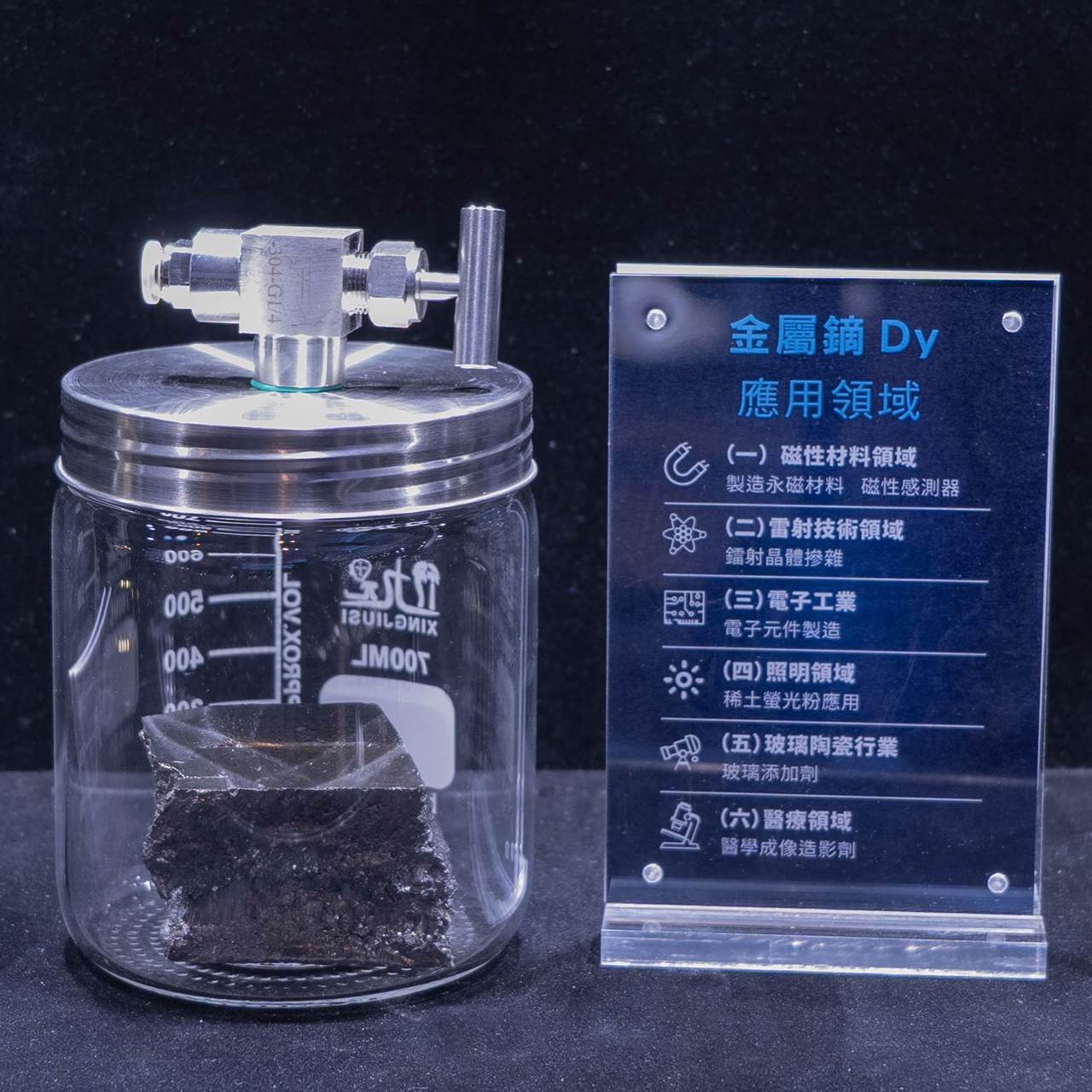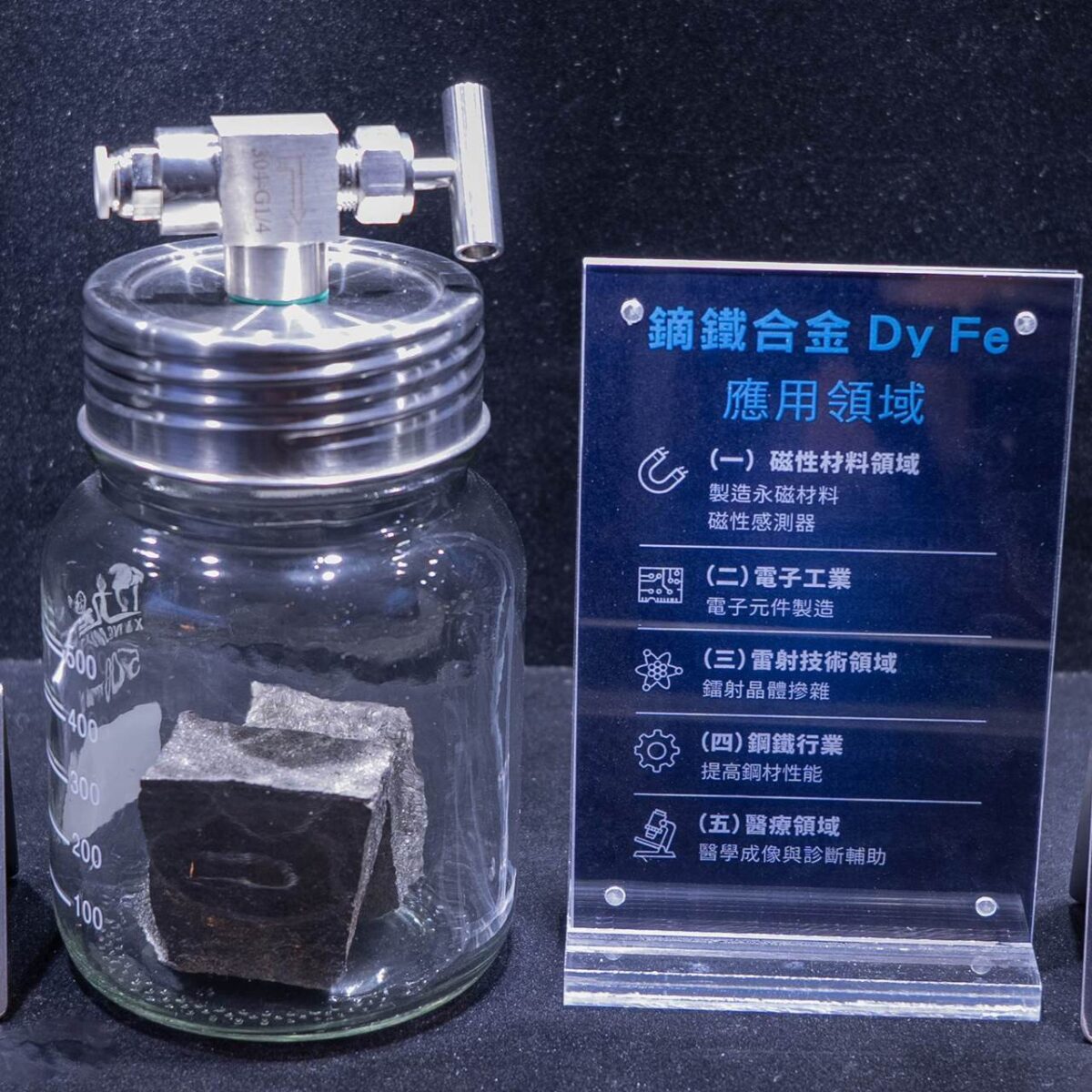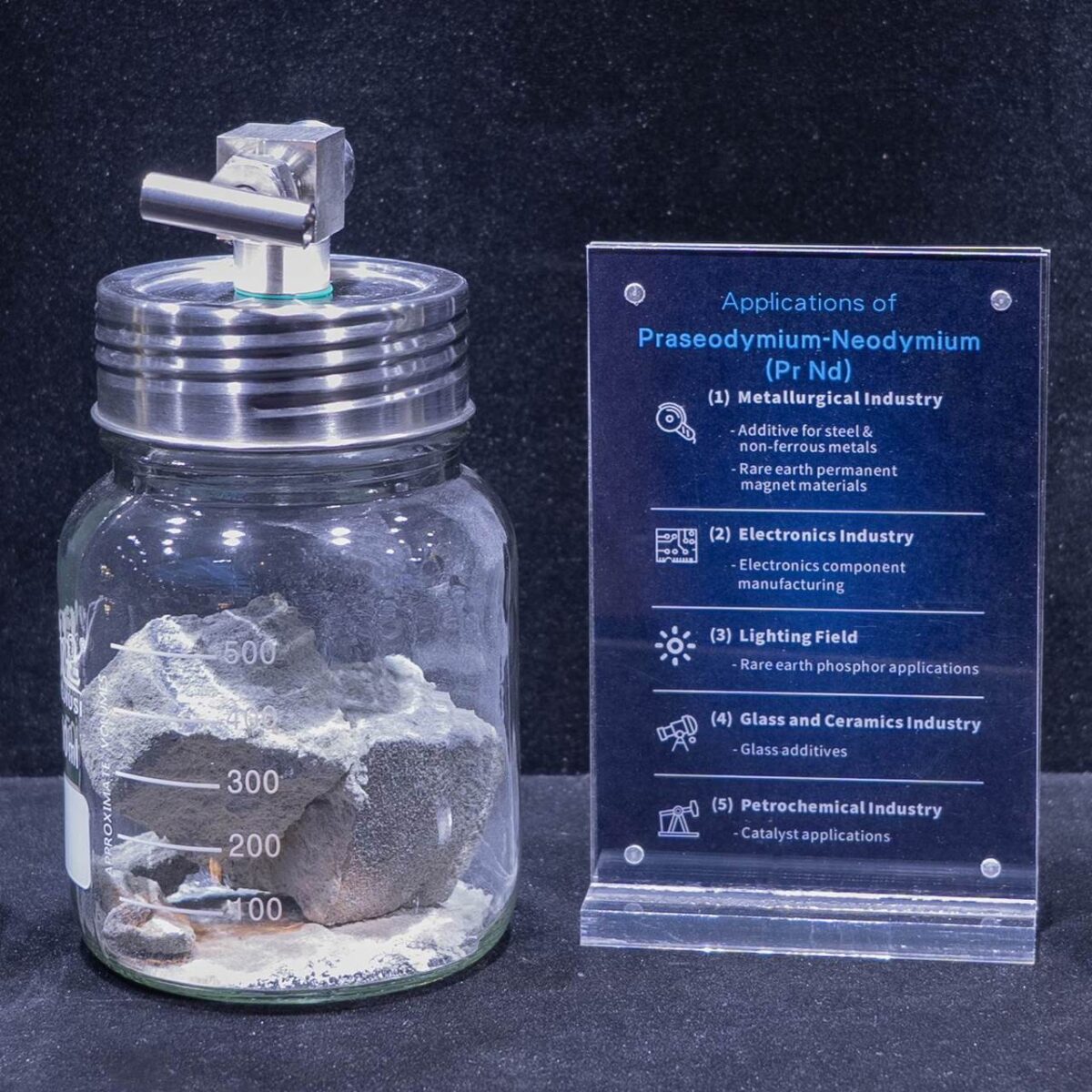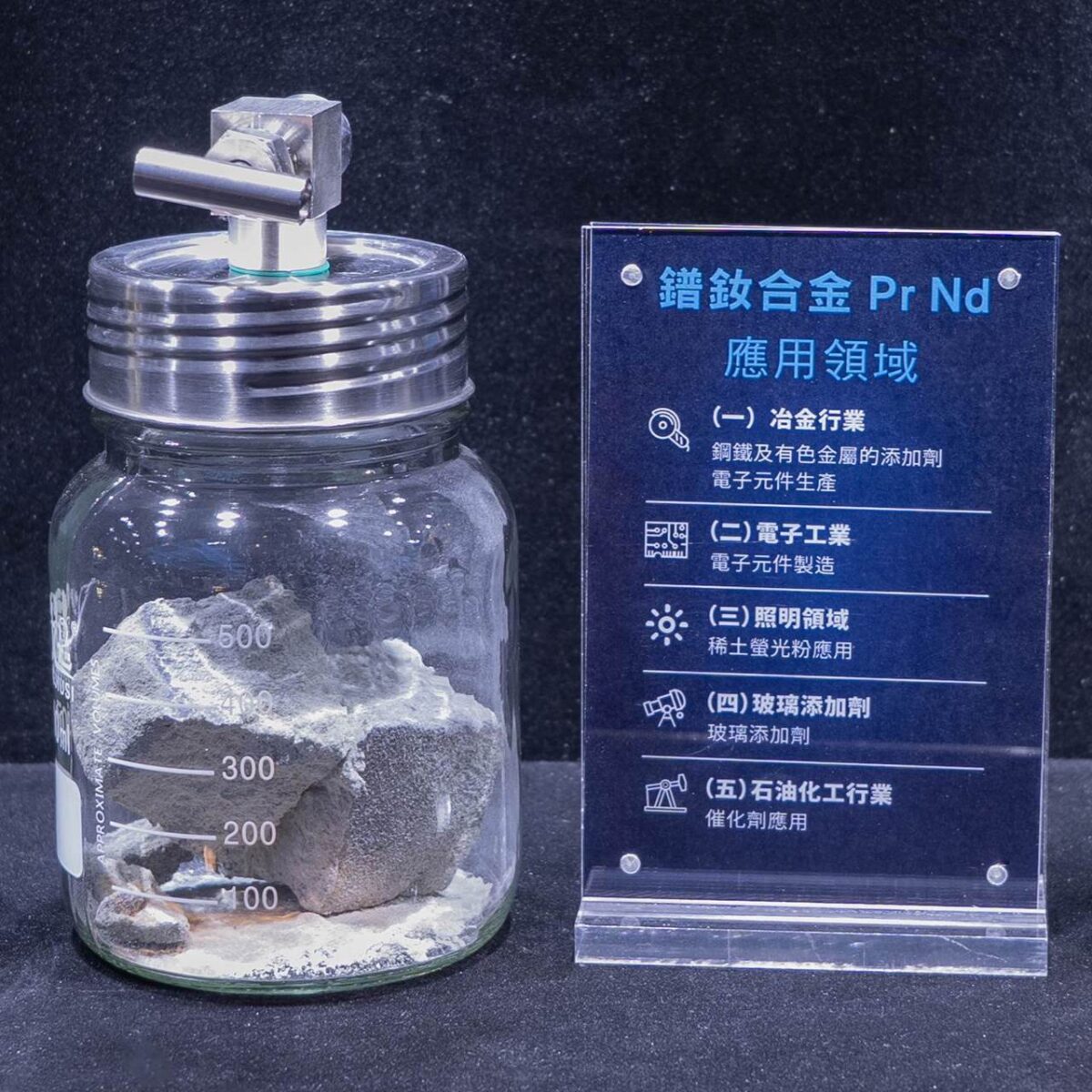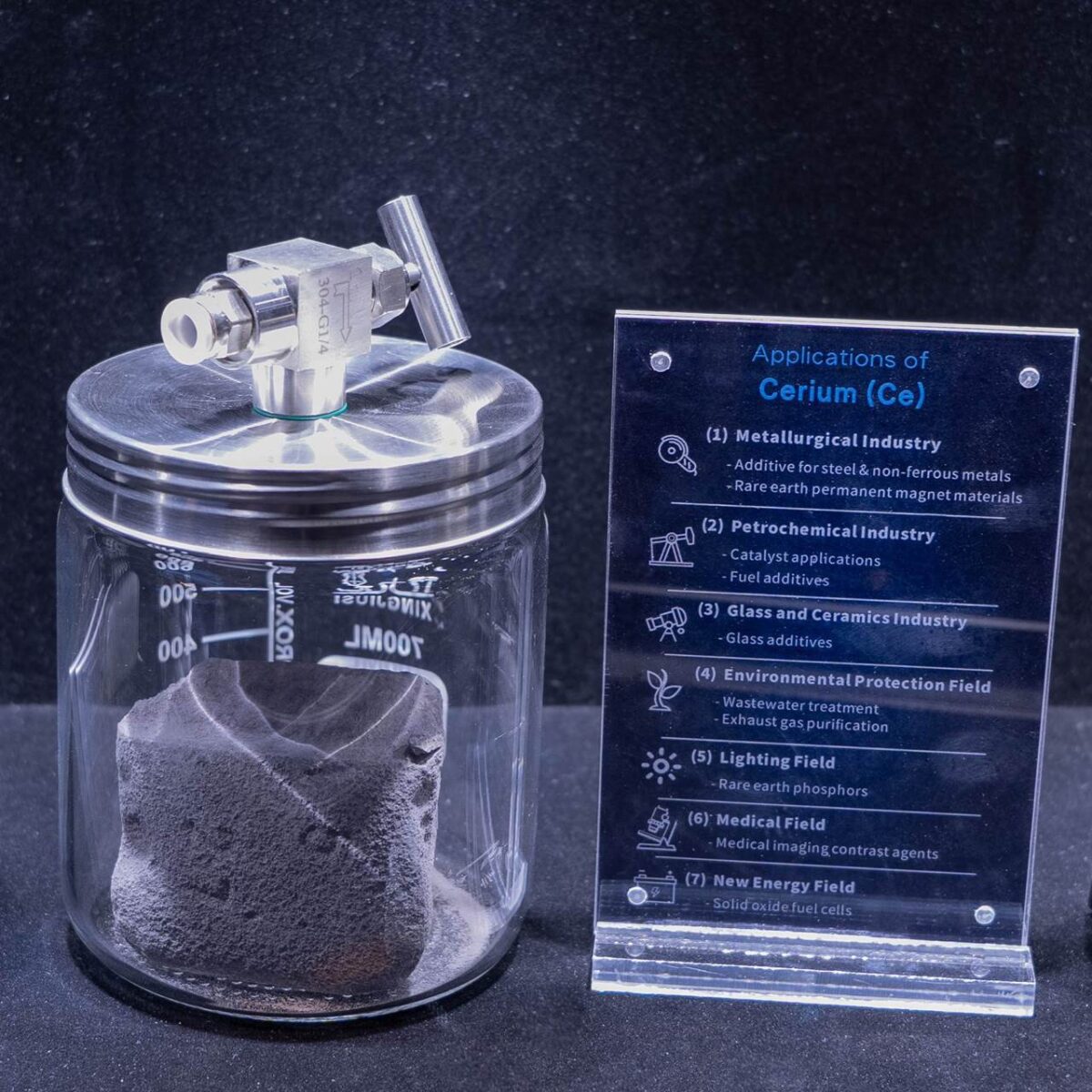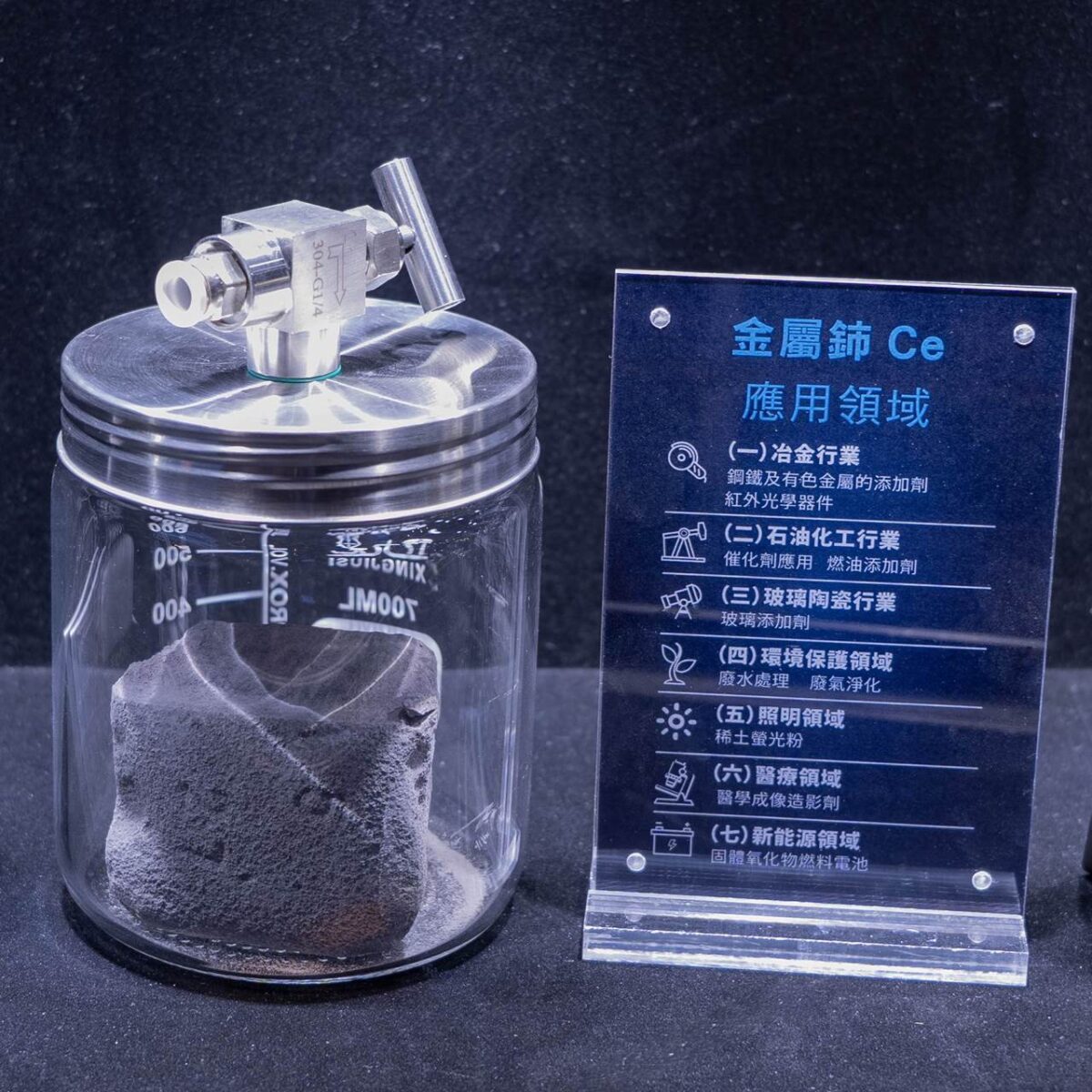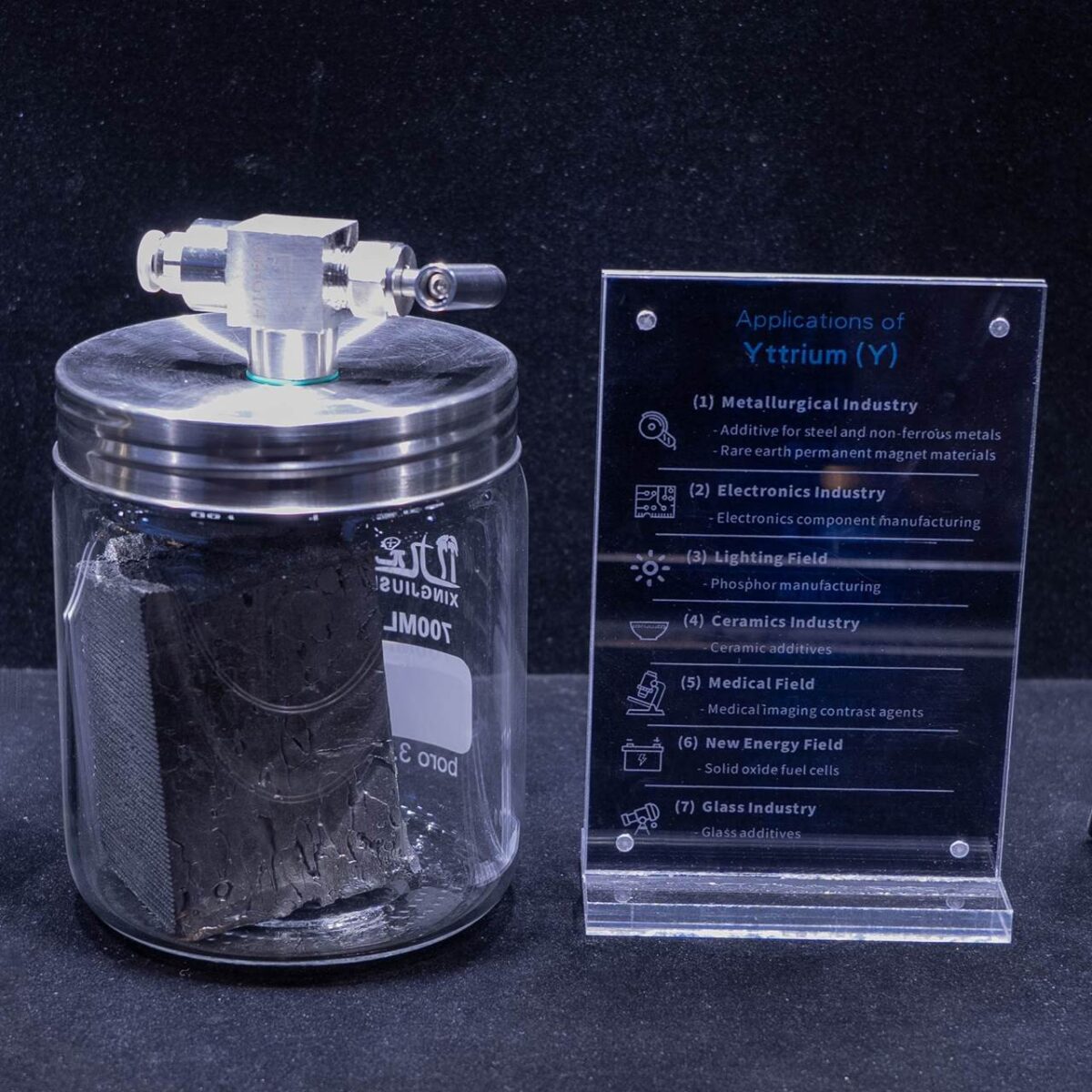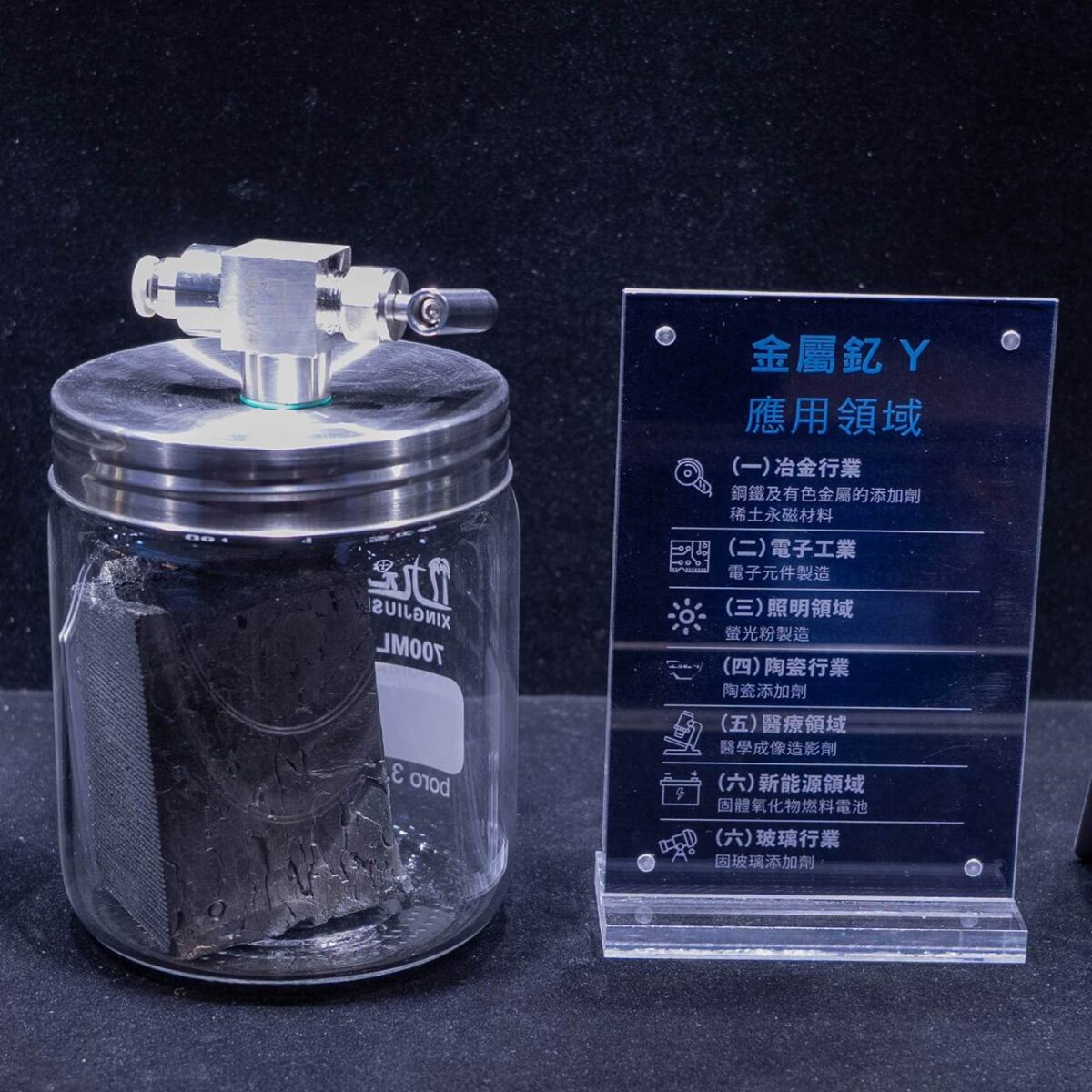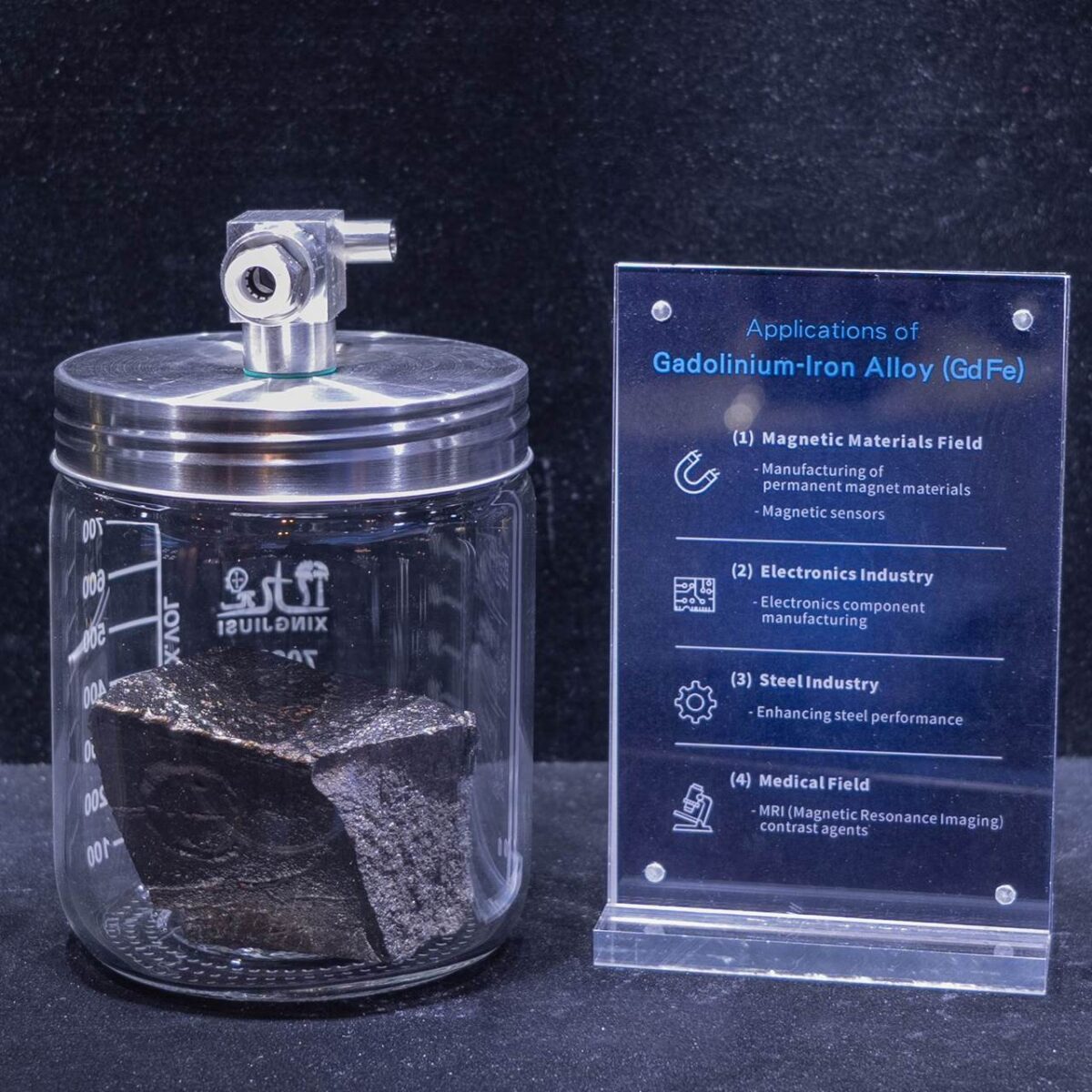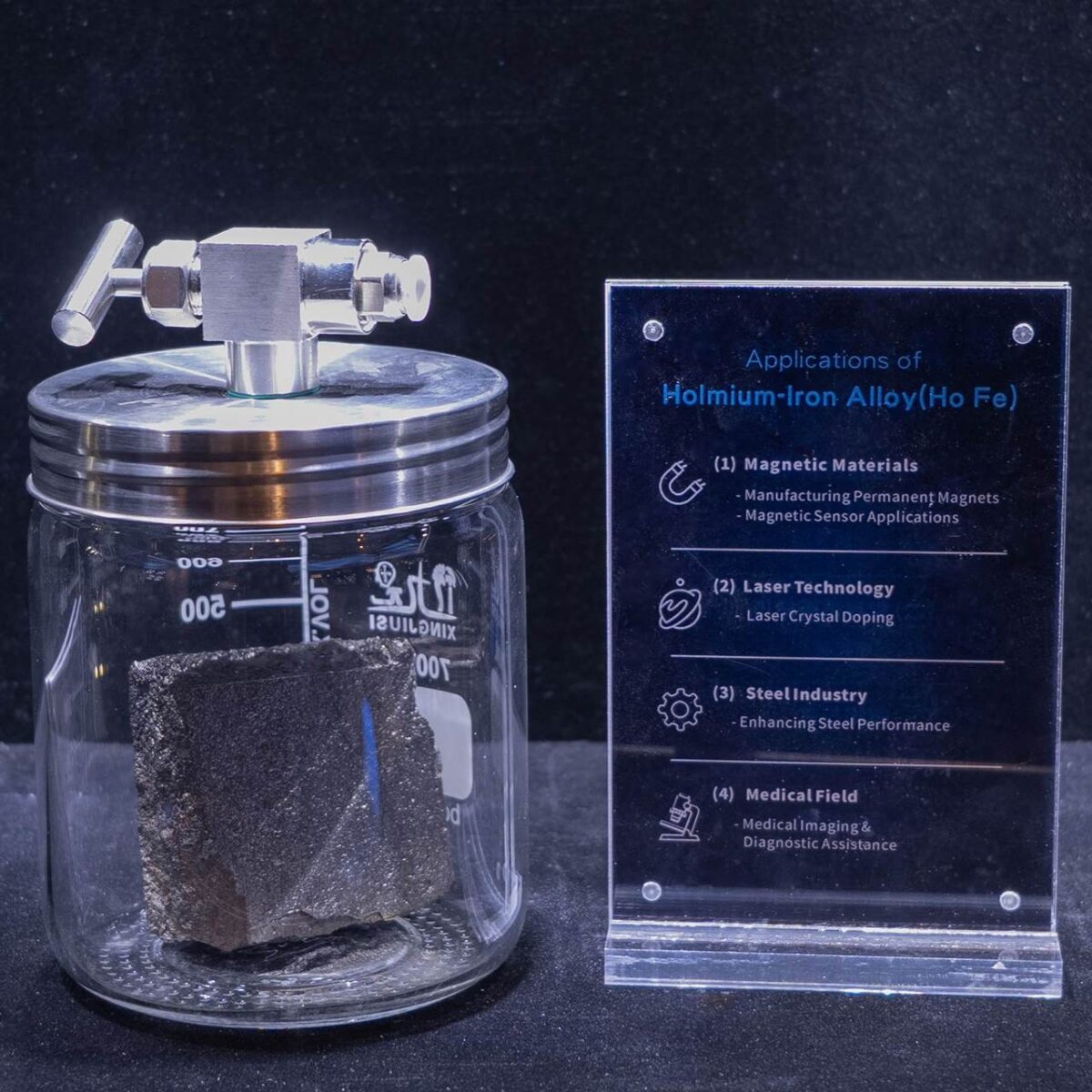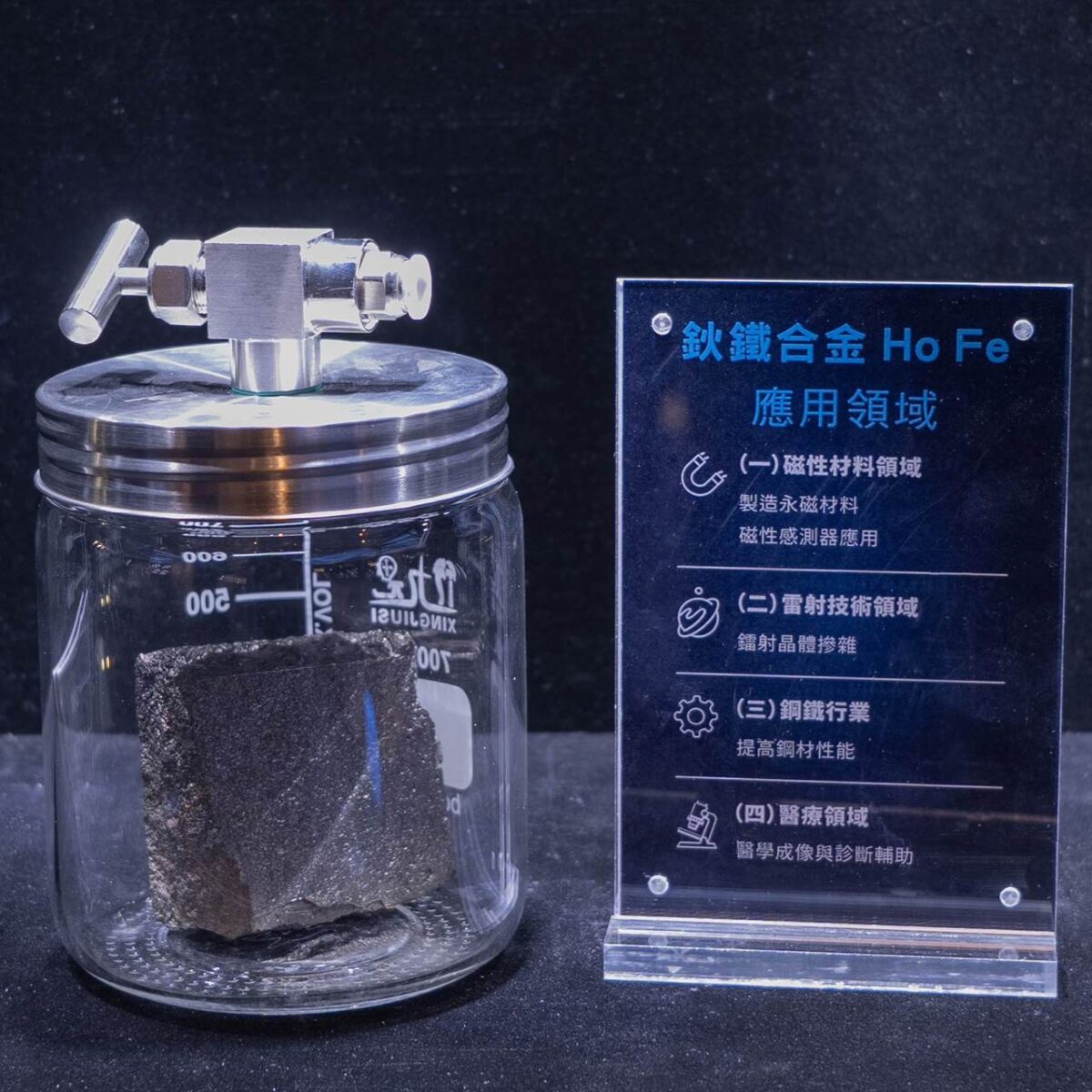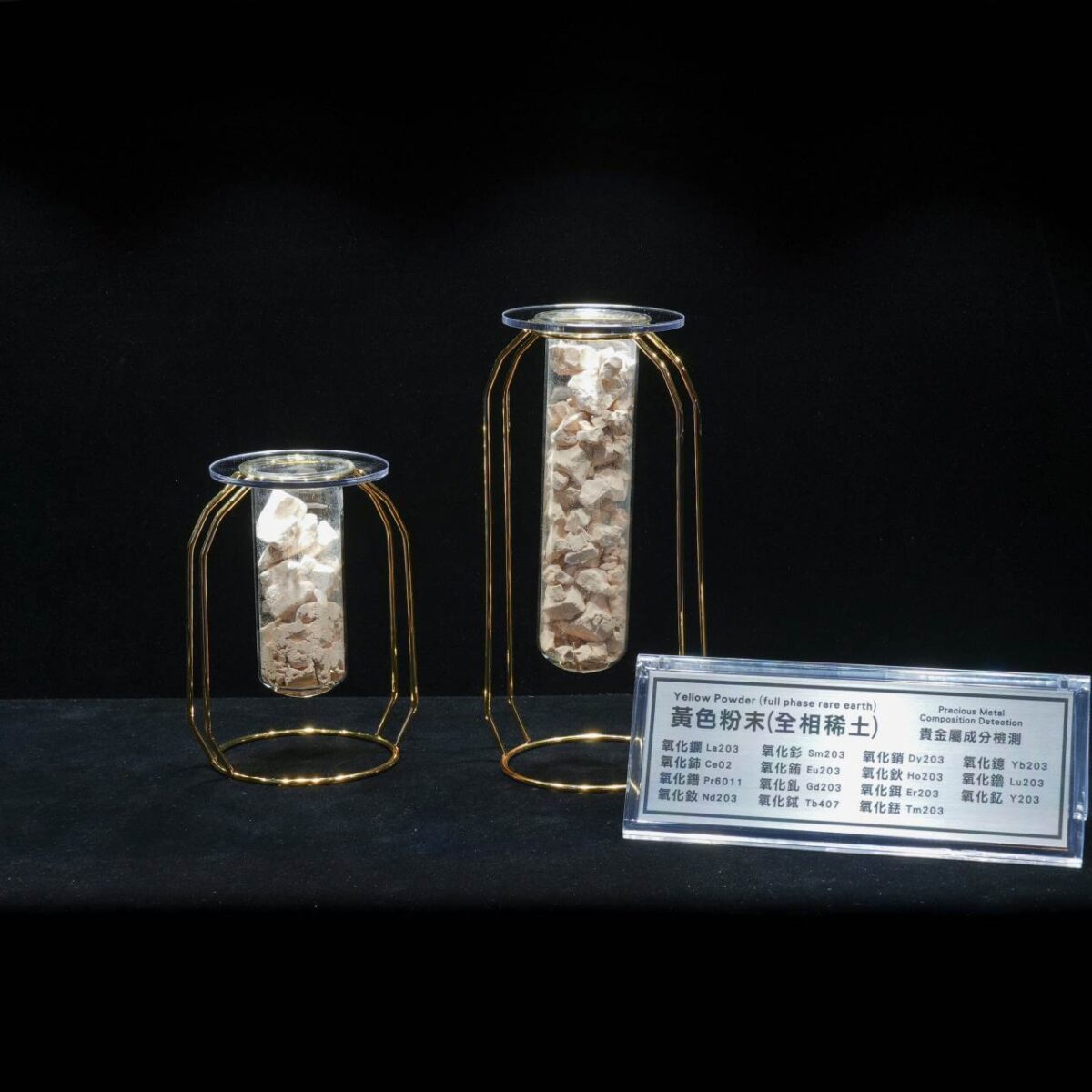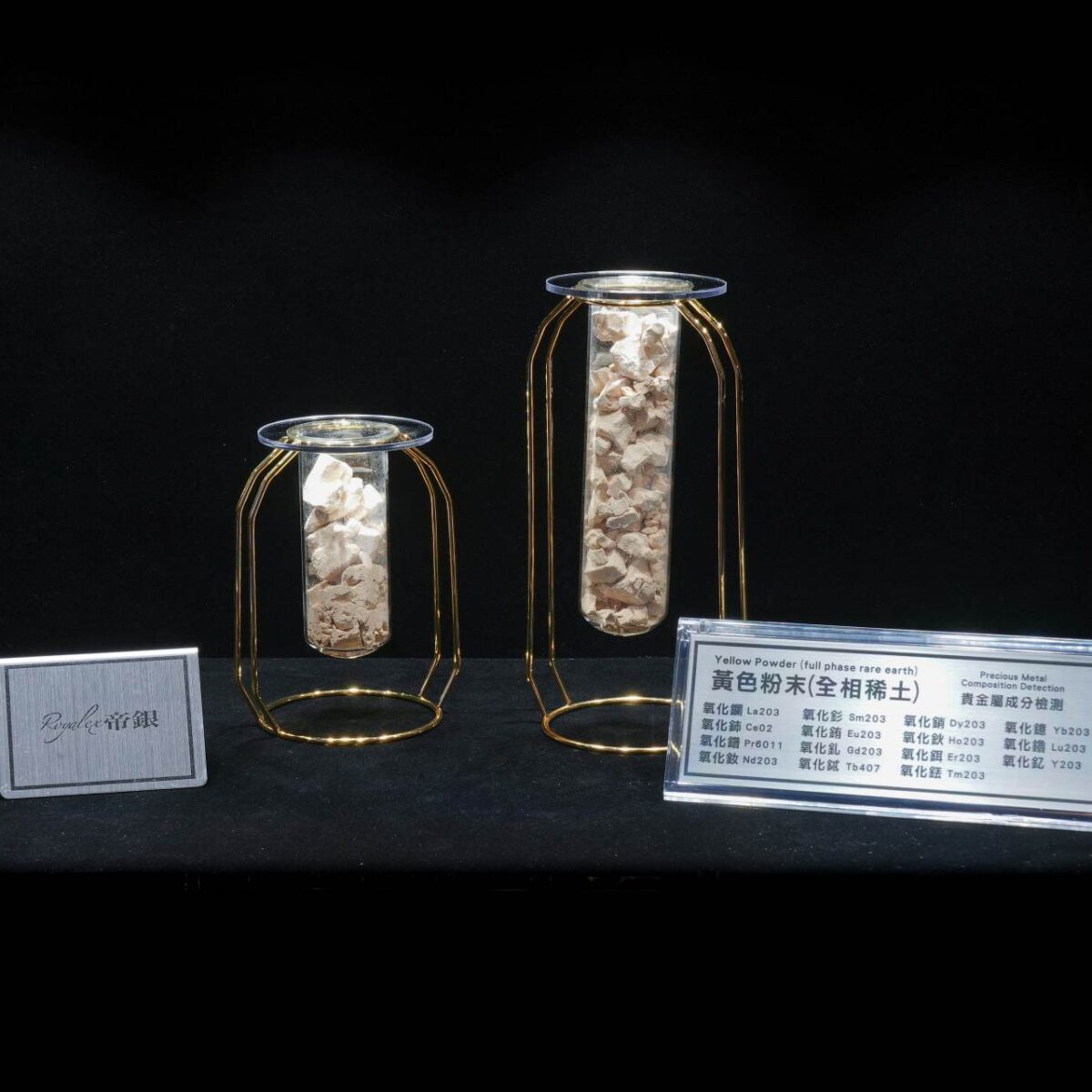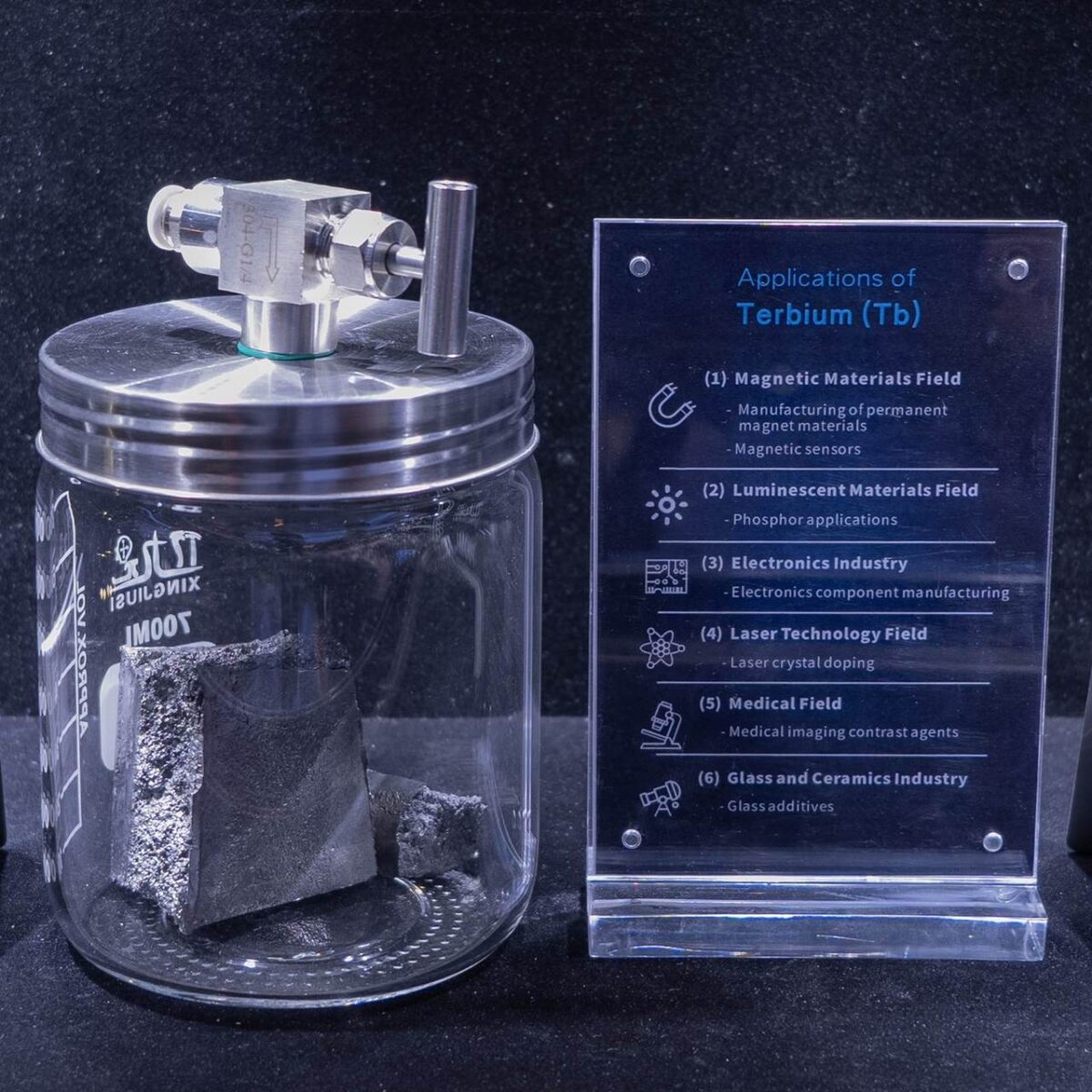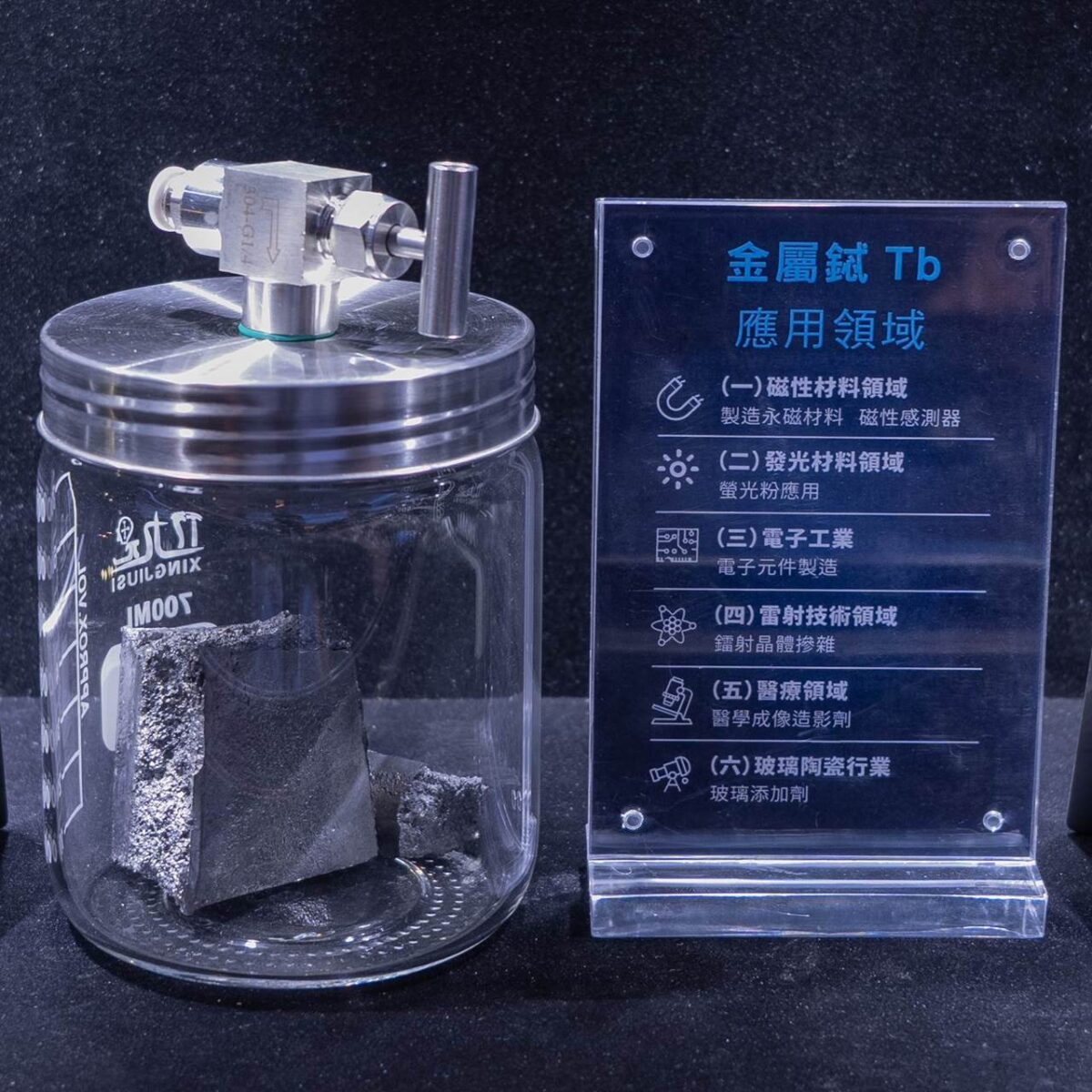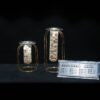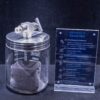Dysprosium
Melting and Boiling Points
Dysprosium has a melting point of 1412°C and a boiling point of 2562°C. These high-temperature characteristics enable it to remain relatively stable in high-temperature environments, making it suitable for industrial applications that require high-temperature processing or usage. This lays the foundation for its application in related fields.
Density and Hardness
The density of dysprosium is approximately 8.55 g/cm³, and it has a moderate hardness with a Mohs hardness of around 5.5. It possesses certain mechanical properties, allowing it to withstand external forces during processing and can be shaped through conventional methods such as forging and rolling to meet various production needs.
Ductility and Electrical Conductivity
Dysprosium has a certain degree of ductility, which allows it to be processed into thin sheets and fine wires, facilitating subsequent industrial applications. It is also a metallic conductor, although its electrical conductivity is slightly weaker than that of common metals (such as copper and aluminum). However, it can still meet the needs of some industrial applications where electrical conductivity requirements are not very high.
Oxidation States and Reactivity
The common oxidation state of dysprosium in compounds is +3. It is chemically reactive and can react with oxygen in the air at room temperature to gradually form an oxide layer on its surface. This oxide layer can slow down its further oxidation to some extent. Dysprosium reacts more noticeably under conditions such as heating or contact with acids or bases.
Reactions with Acids and Bases
Dysprosium can react with common acids such as diluting hydrochloric acid and diluting sulfuric acid to form corresponding dysprosium salts (e.g., dysprosium chloride, dysprosium sulfate) while releasing hydrogen gas. It also reacts with alkaline solutions, demonstrating the characteristics of a reactive metal in acid-base reactions and following the general rules of such reactions.
Magnetic Materials
Permanent Magnet Manufacturing
Dysprosium is an indispensable element in the production of high-performance permanent magnets. Adding dysprosium to neodymium-iron-boron (NdFeB) magnets significantly enhance their coercivity and improves the magnetic performance stability in high-temperature environments. This makes them widely used in various fields with extremely high requirements for magnetic field strength and stability, such as electric vehicle motors, wind turbines, high-precision industrial motors, and aerospace equipment motors. It ensures stable and efficient operation of these devices under complex conditions and high temperatures.
Magnetic Sensors
Leveraging its magnetic properties, dysprosium can be used to manufacture magnetic sensors. These sensors can sensitively detect changes in magnetic field strength and direction, thereby measuring physical quantities such as displacement and velocity of objects. They are important in industrial automation control, intelligent traffic monitoring, and robotics, helping to achieve precise measurement and control, and enhancing the efficiency and accuracy of system operations.
Laser Technology
Laser Crystal Doping
Dysprosium can serve as a key doping element in laser crystals. For example, in specific laser crystals, doping with dysprosium allows the generation of laser beams with specific wavelengths upon external energy excitation. These lasers are used in laser medicine (e.g., laser surgery, laser therapy), laser processing (e.g., cutting, welding), and laser communication, expanding the application scope of laser technology and improving the effectiveness and efficiency of related operations.
Electronics Industry
Electronic Component Manufacturing
In the manufacturing of certain electronic components (such as electronic transformers and inductors), dysprosium can be processed and extracted as a raw material to produce dysprosium-containing components. These components often exhibit unique electromagnetic properties, such as high magnetic permeability and low magnetic loss, meeting the demands of modern electronic devices for miniaturization and high performance. They are widely used in various electronic devices, including smartphones, computers, and communication base stations, contributing to enhanced overall device performance.
Lighting Field
Rare Earth Phosphors
Dysprosium is an important component in the production of rare earth phosphors. Combined with other elements, it can produce phosphors with different colors and excellent performance, which are used in lighting products such as fluorescent lamps and LED lights. These phosphors can improve luminous efficiency, color rendering, and lifespan of lighting, creating a better lighting environment for people.
Glass and Ceramic Industry
Glass Additives
In glass manufacturing, adding dysprosium to optical glass can absorb specific wavelengths of light, altering the optical properties of the glass. It is used in the production of optical elements such as color filters and polarizing mirrors. In architectural glass, dysprosium can enhance the radiation resistance of glass, making it suitable for special environments, such as observation windows in nuclear power plants. In ceramic production, the addition of dysprosium helps improve the color, hardness, and high-temperature resistance of ceramics, enhancing the quality of ceramic products and is commonly used in the manufacturing of high-end ceramics.
Medical Field
Medical Imaging Contrast Agents
Certain compounds of dysprosium have potential applications in medical imaging. After special processing, they can be used as contrast agents to help doctors more clearly observe internal tissues and pathological conditions in the human body. However, most of these applications are still in the research and exploration stages and have not yet been widely used in clinical practice.


